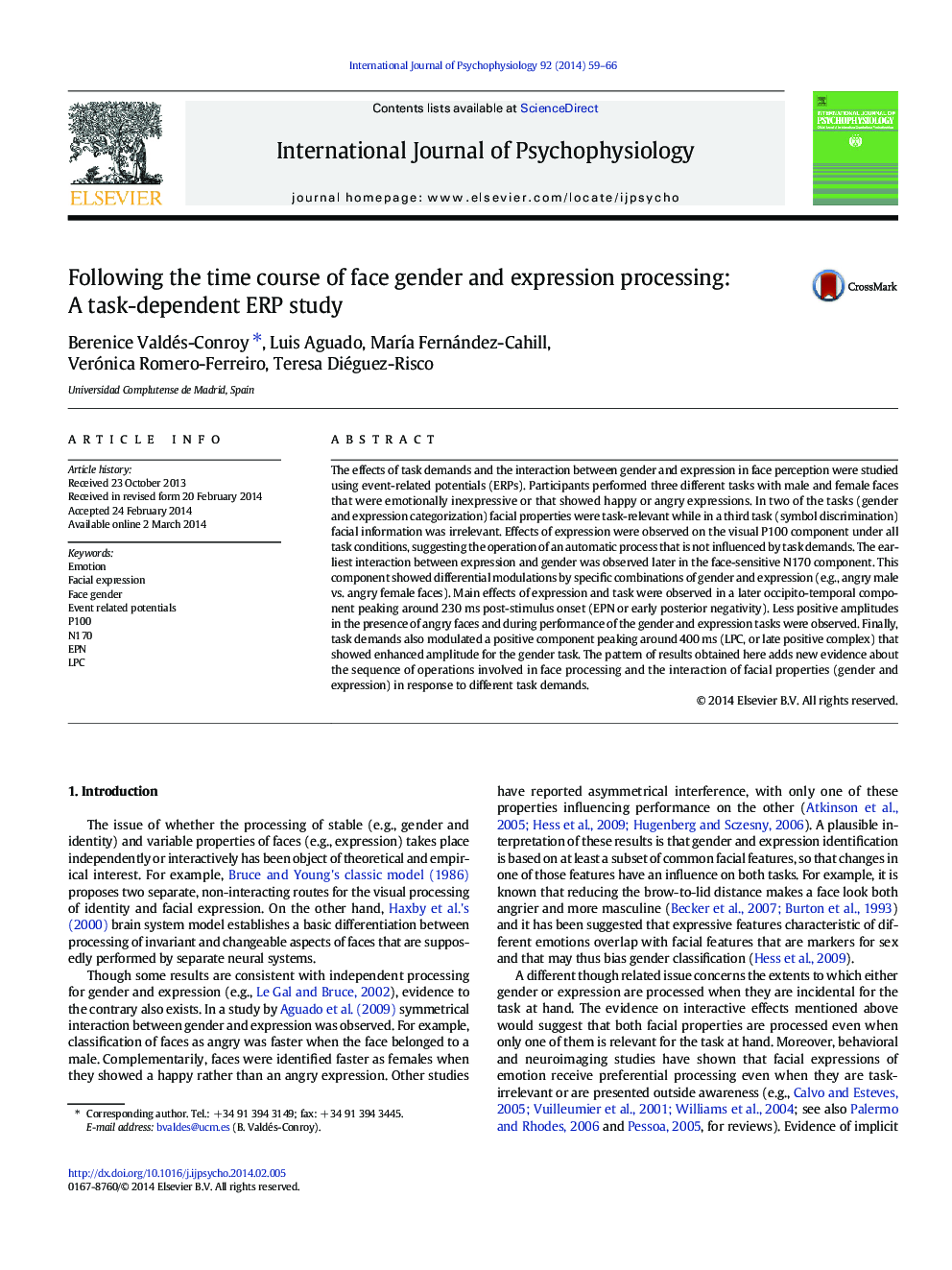| کد مقاله | کد نشریه | سال انتشار | مقاله انگلیسی | نسخه تمام متن |
|---|---|---|---|---|
| 929622 | 1474419 | 2014 | 8 صفحه PDF | دانلود رایگان |

• We recorded EEG during 2 tasks involving facial features (gender and expression).
• A third implicit task is introduced to locate attention to non-facial features.
• We describe the time course for implicit and explicit ERP effects.
• We replicate early implicit effects of expression in the ERP waves.
• Results provide new evidence about the interaction of facial properties.
The effects of task demands and the interaction between gender and expression in face perception were studied using event-related potentials (ERPs). Participants performed three different tasks with male and female faces that were emotionally inexpressive or that showed happy or angry expressions. In two of the tasks (gender and expression categorization) facial properties were task-relevant while in a third task (symbol discrimination) facial information was irrelevant. Effects of expression were observed on the visual P100 component under all task conditions, suggesting the operation of an automatic process that is not influenced by task demands. The earliest interaction between expression and gender was observed later in the face-sensitive N170 component. This component showed differential modulations by specific combinations of gender and expression (e.g., angry male vs. angry female faces). Main effects of expression and task were observed in a later occipito-temporal component peaking around 230 ms post-stimulus onset (EPN or early posterior negativity). Less positive amplitudes in the presence of angry faces and during performance of the gender and expression tasks were observed. Finally, task demands also modulated a positive component peaking around 400 ms (LPC, or late positive complex) that showed enhanced amplitude for the gender task. The pattern of results obtained here adds new evidence about the sequence of operations involved in face processing and the interaction of facial properties (gender and expression) in response to different task demands.
Figure optionsDownload as PowerPoint slide
Journal: International Journal of Psychophysiology - Volume 92, Issue 2, May 2014, Pages 59–66